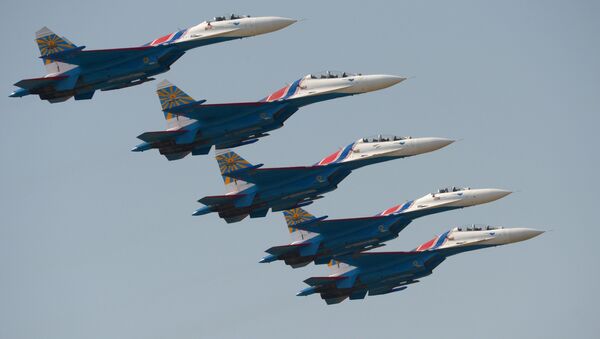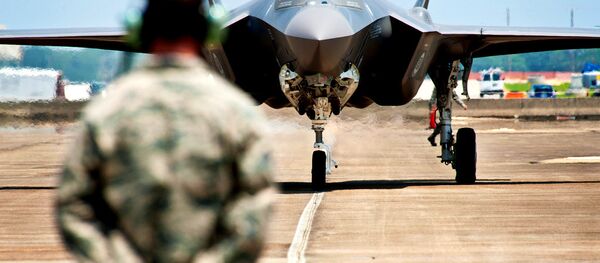The last of the major fourth-generation fighters to enter service, the Su-27 "has proven an exceedingly successful design," the analyst noted. "Big enough and powerful enough to sustain a number of modifications and improvements, the Flanker should continue to see service (and even production) for quite some time."
The Su-27 is a twin-engine supermaneuverable fighter aircraft with "formidable" capabilities, boasting a maximum speed of Mach 2.35 and a range exceeding 3,500 km (2,190 miles). The plane is capable of reaching a maximum altitude of 19,000 meters (62,523 feet) with a maximum takeoff weight of 30,450 kg (67,100 lb).
The aircraft, designed and manufactured by the Sukhoi Company, made its maiden flight in 1977. It was meant to compete with fourth-generation US fighters, the Grumman F-14 Tomcat and F-15 Eagle. A total of 809 Su-27s has been produced since the 1980s.
"Intended both to defeat US fighters over central Europe in a NATO-Warsaw Pact conflict and to patrol the airspace of the Soviet Union against US bomber incursions, the Su-27 survived the end of the Cold War to become one of the world's premier export fighters," the senior lecturer at the Patterson School of Diplomacy and International Commerce at the University of Kentucky explained.
The fighter aircraft has been in service in Angola, Eritrea, Ethiopia, Indonesia, Kazakhstan, Mongolia, Ukraine, Uzbekistan and Vietnam. China has produced a derivative of the Su-27, known as Shenyang J-11, since 1998.
The Lockheed Martin F-35 Lightning II "could be expected to achieve only a 3-to-1 kill ratio" against the Mikoyan MiG-29 and Su-27 "despite its advantages in stealth," a National Security Network (NSN) report released in August 2015 stated, citing a study conducted by the US Air Force and Lockheed Martin in 2009.



